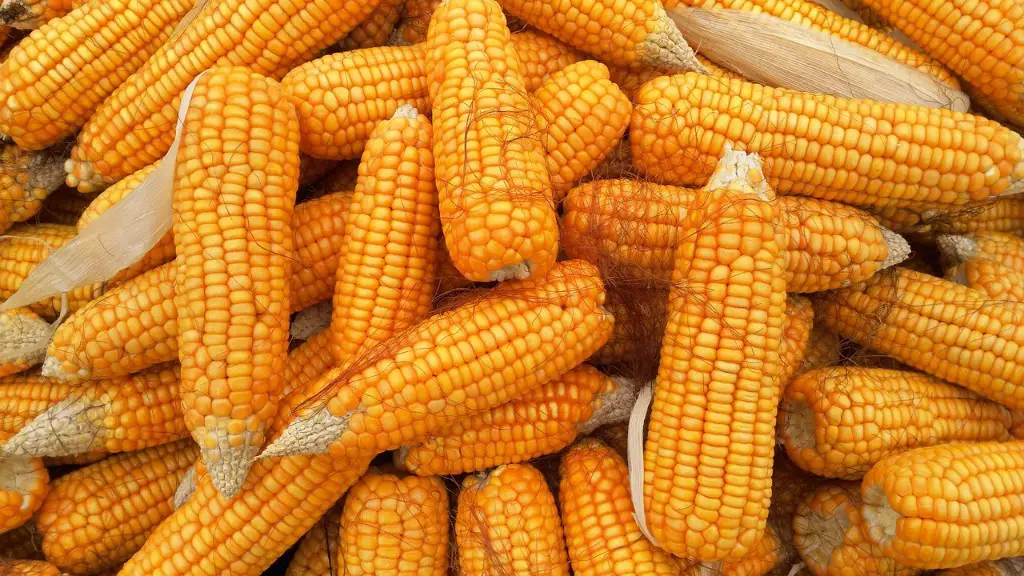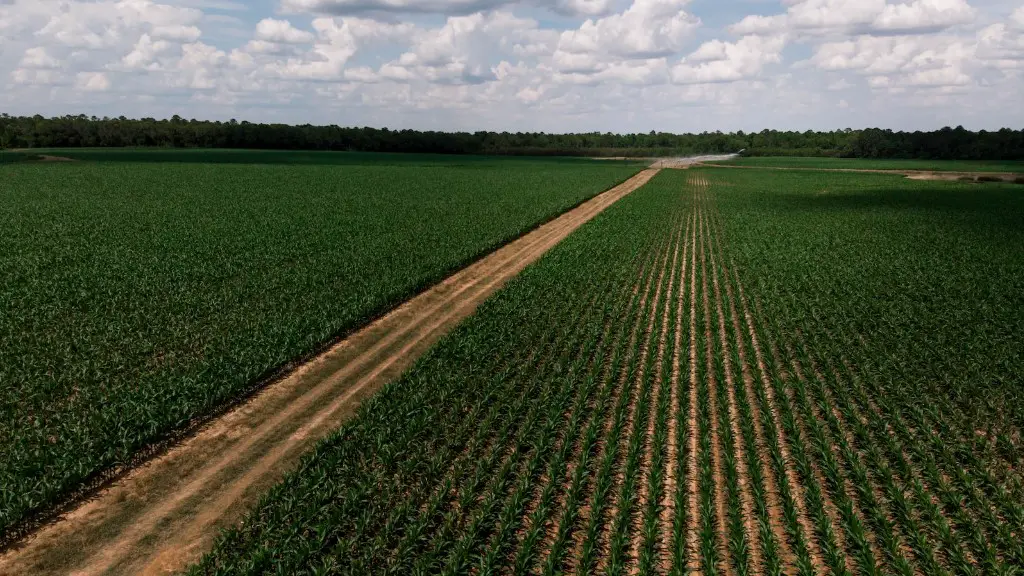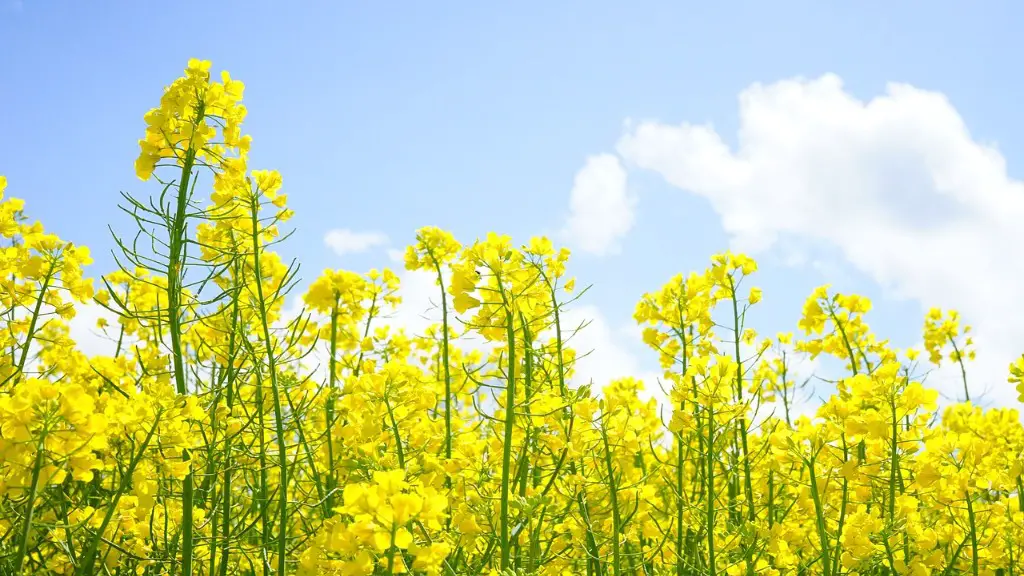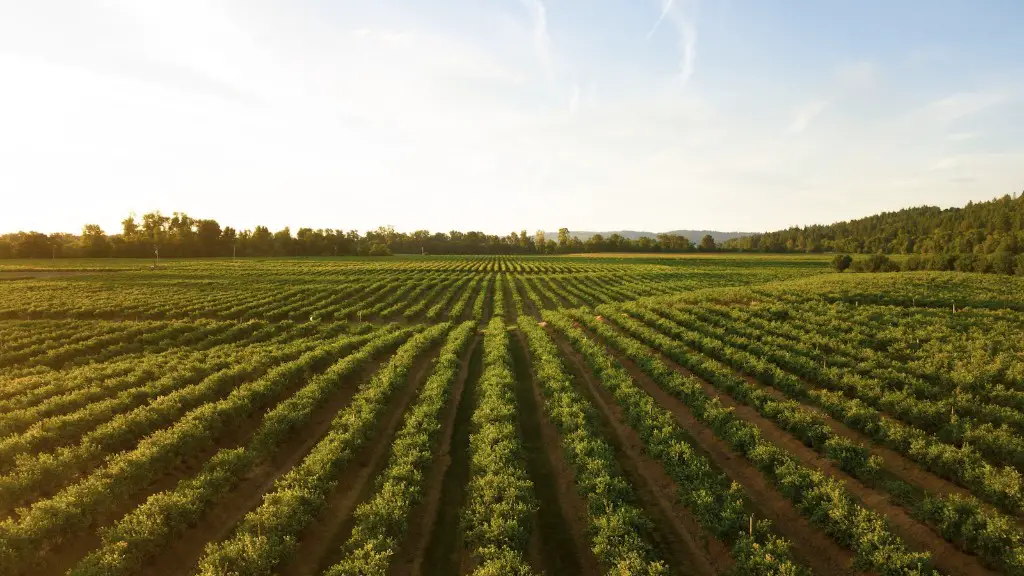Animal agriculture occupies nearly 80% of the world’s farmland and is responsible for 18% of greenhouse gas emissions – more than the entire transportation sector. Agriculture is also a major source of other air, water and land pollution. In short, it’s not looking good for the environment.
The main drivers of environmental degradation from animal agriculture are deforestation, emissions of greenhouse gases, and water and land pollution.
Deforestation is caused by the need for more farmland to support the ever-growing demand for meat and dairy products. An area twice the size of the U.K. is deforested every year to make way for soybean plantations, the majority of which are used to feed livestock.
Emissions of greenhouse gases are a major problem because they contribute to climate change. Animal agriculture is responsible for emitting methane and nitrous oxide, both of which are greenhouse gases that are more potent than carbon dioxide.
Water and land pollution are also big problems. Animal agriculture uses huge amounts of water – for example, it takes over 15000 litres of water to produce just 1kg of beef. And the waste produced by animals on factory farms pollutes our water resources with harmful chemicals and pathogens.
The agricultural industry has a significant impact on the environment. Animal agriculture emits a variety of greenhouse gases into the atmosphere, including carbon dioxide, methane, and nitrous oxide. These gases contribute to climate change and global warming. Animal agriculture also uses large amounts of water, land, and other resources. It can cause soil erosion and deforestation. Animal agriculture can also pollute rivers, lakes, and oceans with manure and other waste products.
Why is animal agriculture bad for environment?
The main greenhouse gases emitted from raising livestock for human consumption are methane and carbon dioxide. These gases are released from the animals during their digestive process and from the decomposition of their manure. In addition, livestock grazing can lead to deforestation and the loss of biodiversity, as well as water pollution from the animals’ waste.
The National Sustainable Agriculture Coalition (NSAC) is a coalition of family farmers, rural businesses, and consumers working together to advocate for federal policies that advance the sustainability of agriculture, food systems, natural resources, and rural communities.
In recent years, the NSAC has been working to improve the labeling standards for meat products. Specifically, the NSAC has been advocating for the inclusion of information on the origin of the animal, the feed used, and the method of slaughter. The NSAC believes that these labeling standards will help consumers make more informed choices about the meat they purchase, and will ultimately lead to more sustainable meat production.
The NSAC’s efforts have been successful; in 2016, the U.S. Department of Agriculture (USDA) issued new labeling standards for meat products that included all of the information advocated for by the NSAC. The new labeling standards will go into effect in early 2017.
The NSAC is pleased with this progress, but is continuing to work to improve the labeling standards for meat products even further. Specifically, the NSAC is now advocating for the inclusion of information on the carbon footprint of the meat product. The NSAC believes that this information will be critical in helping consumers understand the true environmental impact
How much co2 does animal agriculture produce
The Food and Agriculture Organization (FAO) of the United Nations estimates that emissions from animal agriculture represent around 71 Gt CO2eq per year [5], 145% of annual anthropogenic greenhouse gas emissions, although this is based on outdated data and likely now represents and underestimate [20], and recent.
Animal agriculture is a major contributor to biodiversity loss. The report found that it is the primary driver of species extinction, with 86 percent of species at risk of extinction due to agriculture. The report recommends a major shift in the way we produce and consume food, as well as increased investment in conservation, to combat the threat to biodiversity.
What are the negative effects of animal farming?
Livestock production is a major source of water pollution and ammonia emissions, which can have a drastic impact on biodiversity, especially in aquatic ecosystems. This pollution can come from a variety of sources, including animal waste, feedlots, and manure management. Additionally, overfishing to provide fishmeal for animal feed can also reduce biodiversity in marine ecosystems.
The livestock sector is a major contributor to greenhouse gas emissions. In fact, it is responsible for 145 percent of all human-caused GHG emissions, amounting to 71 gigatonnes (GT) of carbon dioxide equivalent (CO2-eq) per year. The main sources of emissions are feed production and processing, and methane from ruminants’ digestion.
The livestock sector presents a significant opportunity for emissions reduction. Reducing emissions from livestock requires a multi-faceted approach that includes improving efficiency in feed production and processing, and reducing methane emissions from ruminants.
There are a number of different options for reducing methane emissions from ruminants. One option is to change the animals’ diet so that they produce less methane. Another option is to use methane-capture technology. This technology can be used to capture methane emissions from livestock and convert them into energy, which can then be used to power homes and businesses.
The livestock sector is a major contributor to greenhouse gas emissions and presents a significant opportunity for emissions reduction. Taking action to reduce emissions from this sector is essential to mitigating climate change.
What percentage of global warming is caused by animal agriculture?
Animal agriculture is one of the leading causes of greenhouse gas emissions and environmental degradation. It is responsible for at least 165% of global greenhouse gas emissions, and causes significant biodiversity loss and deforestation. Animal agriculture is a major contributor to climate change, and is a major cause of pollution and land degradation.
The term “factory farming” is used to describe the intense confinement and routine mutilation of animals raised for food. These conditions are often justified in the name of efficiency and cost-savings, but at what cost?
Animals on factory farms endure lives of extreme confinement, often in cages so small they can barely move. They are routinely subjected to genetic manipulation and other cruel practices in order to maximize output for human consumers.
Factory farming is an inhumane and unsustainable way of producing food. Animals raised in these conditions suffer immensely, and the environmental impact of these operations is significant. If you care about animal welfare and the environment, you should avoid supporting factory farming by choosing humanely-raised meat, dairy, and eggs.
What are the pros of animal agriculture
Farm animals play an important role in our food system, providing a source of high-quality protein and other nutrients. In addition, they also provide valuable resources such as manure for fertilizer, on-farm power, and other by-products. Farm animals also contribute to economic diversification and risk distribution, making them an important part of our food system.
These new findings are significant because they suggest that animal agriculture is responsible for a much larger share of greenhouse gas emissions than previously thought. This means that efforts to reduce emissions from this sector are urgently needed in order to avert the worst impacts of climate change.
Does animal agriculture produce 51% of greenhouse gas emissions?
Livestock and their byproducts contribute a huge amount of carbon dioxide emissions each year. These emissions are responsible for 51% of all worldwide greenhouse gas emissions. This is a significant contribution that needs to be addressed in order to help reduce the amount of greenhouse gases in the atmosphere.
CO2 is the most significant greenhouse gas, contributing 76 percent of total emissions. Methane emissions, primarily from agriculture, account for 16 percent of total greenhouse gas emissions, while nitrous oxide emissions, mostly from industry and agriculture, make up 6 percent of total emissions.
How destructive is animal agriculture
Livestock farming is a major contributor to environmental degradation. It contributes to land and water degradation, biodiversity loss, acid rain, coral reef degeneration and deforestation. The impact of livestock farming on climate change is particularly evident. Livestock farming contributes 18% of human produced greenhouse gas emissions worldwide. This significant impact highlights the need for more sustainable practices in livestock farming.
Most people have no idea how hard farmers work every day. They are up before the sun rises and often work until after the sun goes down. They have to be able to deal with all kinds of weather conditions, including extreme heat and cold. And they have to be able to do all this while keeping their animals healthy and happy. farmers are some of the most dedicated and hard-working people around!
What is the biggest problem in Animal Farm?
The central conflict in Animal Farm arises when the animals’ desire for freedom and equality is corrupted by the consolidation of political power amongst the pigs. The pigs take advantage of the animals’ trust and use their power to control and manipulate them. This eventually leads to the animals’ suffering and oppression.
Fossil fuels are the largest contributor to climate change.
Climate change is caused by greenhouse gas emissions trapping the sun’s heat.
Fossil fuels are the largest source of greenhouse gas emissions.
Reducing fossil fuel use is essential to mitigating climate change.
Final Words
Animal agriculture is one of the leading causes of environmental degradation. It is responsible for soil erosion, water pollution, and deforestation. Animal agriculture also emits greenhouse gases, which contribute to climate change.
yes, animal agriculture is bad for the environment. The main reason is that raising animals for food requires a lot of land and water. Animal agriculture is also one of the leading causes of greenhouse gas emissions, which contribute to climate change. Additionally, animal agriculture can pollute the air, water, and soil.





